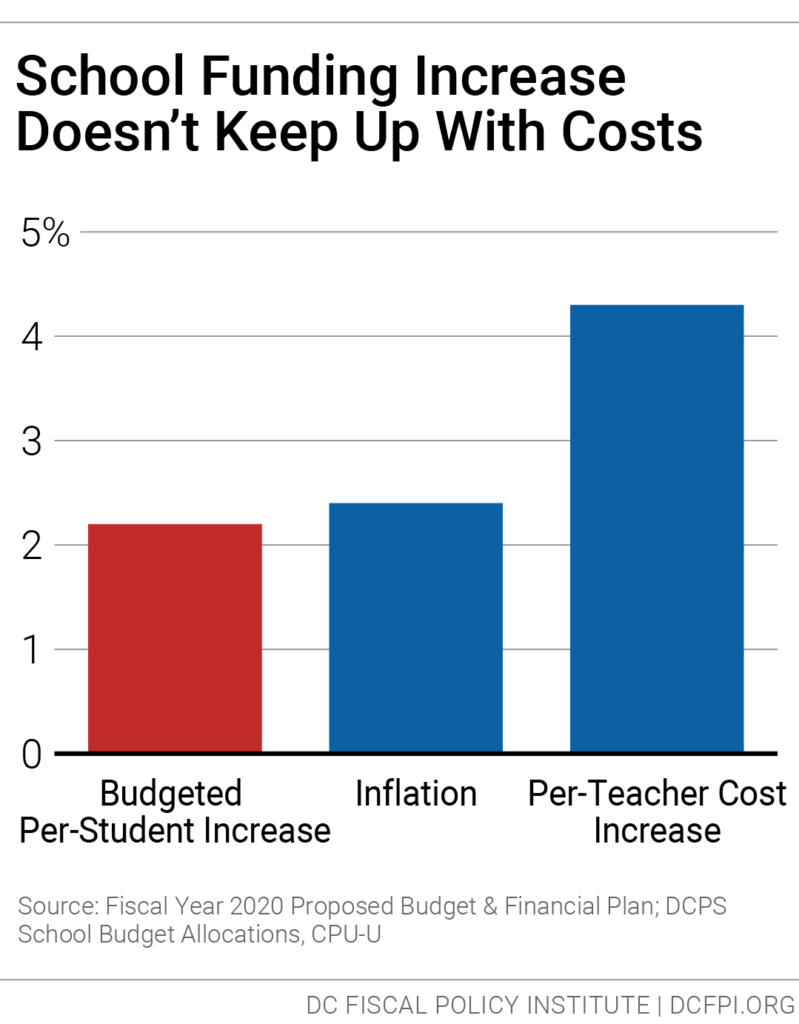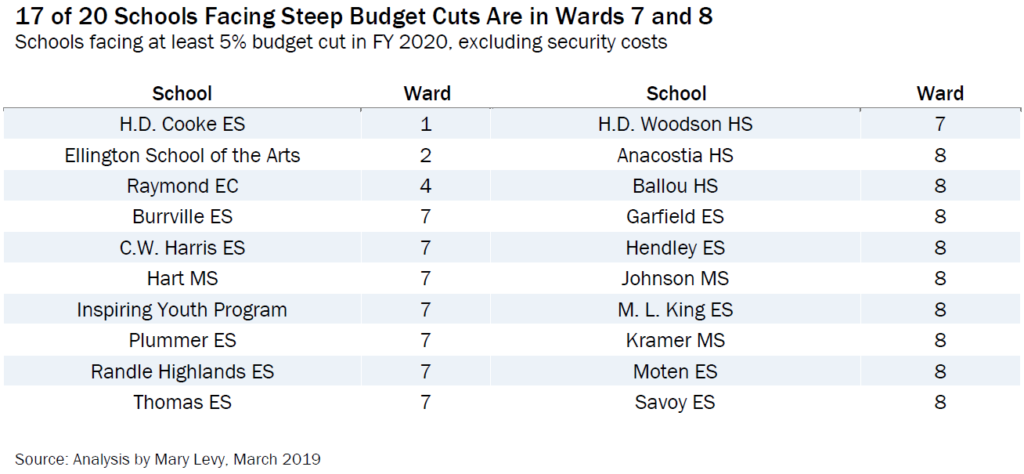The proposed fiscal year (FY) 2020 budget shortchanges all DCPS schools, but particularly schools in Wards 7 and 8, which have the largest concentration of low-income students of color. In a city with both growing prosperity and deepening racial inequities, schools need more resources to support equitable education outcomes, not less. As the Council works to complete the budget, reversing these cuts should be a top priority.
Under the proposed DCPS budget and initial allocations to individual schools, 32 schools will face budget reductions, with 20 schools facing reductions of 5 percent or more.[1] Of the schools facing deep cuts, 17 are in Wards 7 and 8 (Table 1).
The budget cuts reflect a number of factors. First, the proposed per-student funding increase is less than inflation and less than the increase in the average cost of a DCPS teacher (Figure 1). That means that overall, schools may not be able to maintain current staff and services. Second, while DC’s per-student funding formula (UPSFF) provides more resources for students who are at risk of academic failure,[2] DCPS knowingly diverts half of these “at-risk” funds to pay for core classroom staff, so that it’s not available for supplemental services as intended.

Third, and perhaps most significant this year, the formula DCPS uses to allocate funding across schools sets up neighborhood schools in low-income communities for failure. The formula relies heavily on enrollment, and on the surface appears to treat schools equally. However, as Black residents are being displaced and as schools are losing students due to competition from DCPS magnet schools and public charter schools, many schools in low-income communities of color are facing enrollment declines. This means neighborhood schools routinely face resource cuts, which in turn affects quality that may contribute to further enrollment declines—what some call a “death spiral.” Yet neighborhood schools are the foundation of our school system, since students aren’t guaranteed a spot in charters or magnets.
Addressing the needs of neighborhood schools in low-income communities is critical to addressing DC’s large racial inequities in school outcomes, and ensuring that all students can develop to their full potential. Last week, the DC Council held a hearing on legislation to incorporate racial equity into the work of DC government—the Racial Equity Achieves Results Amendment Act (REAR Act). But the Council doesn’t need to wait for this legislation to pass. It can start acting now, using the FY 2020 budget to advance racial equity.
In education, that means reversing the budget cuts to neighborhood schools, particularly in Wards 7 and 8—a one-year solution that should be followed with more long-term planning on how to support neighborhood schools in low-income communities.

[1] This DCFPI calculation excludes security costs, which DCPS included in school level budgets for 20109-20 but not for 2019.
[2] DCPS defines students at-risk of academic failure as those who are in foster care, experiencing homelessness, are over age for their grade, or participate in the Supplemental Nutrition Assistance Program (SNAP) or Temporary Assistance for Needy Families (TANF).

